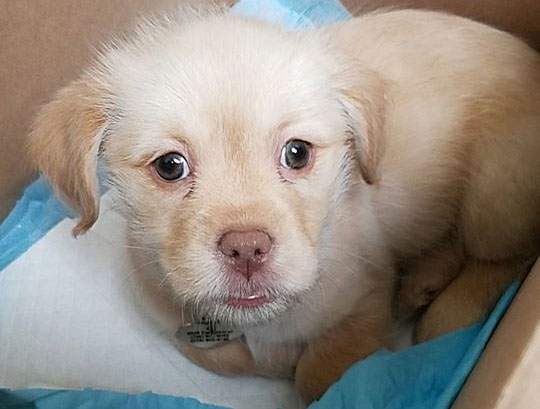Canine Influenza Virus

Canine influenza is a highly contagious respiratory infection caused by two different strains of the influenza virus (H3N2 and H3N8). Originally, the H3N8 virus was seen only in horses. In 2004, racing greyhounds in Florida began displaying signs of an unknown respiratory infection. Eventually, the H3N8 virus had begun to infect dogs.
Today, it is believed that the H3N8 strain only affects dogs. In 2015, there was an increase in reports of dogs infected with canine influenza in the Chicago area. It was ultimately determined that the H3N2 strain had entered the United States for the first time. Previously, this strain had only been seen in South Korea, China and Thailand. The H3N2 and H3N8 strains are not the same as the human influenza virus, and people cannot get sick from these virus strains.
Disease Transmission
Respiratory infections (including canine influenza) are seen mainly in dogs in boarding facilities, patients who visit the groomer, and animals in shelters. However, we also see respiratory infections in dogs who visit dog parks, attend doggie day care, and even from chance meetings with infected dogs during a walk. Canine influenza can even be brought back home on clothing and other items after owners come in contact with an infected dog. The canine influenza virus can survive for 48 hours on hard surfaces and 24 hours on clothing. An infected dog can spread the virus with or without the presence of clinical signs.
Clinical Signs
Two to five days after exposure, clinical signs of canine influenza are usually noticeable. Typically, we see two different types of infections:
- Mild infection: Clinical signs include a cough that can last anywhere from 10 to 30 days and clear nasal discharge.
- Severe infections: Clinical signs are a fever, thick mucoid nasal discharge, anorexia, lethargy, difficulty breathing and sometimes even pneumonia. The pneumonia can be so severe that some infected dogs cough up blood.
Approximately 80% of infected dogs have mild clinical signs, and 20% of patients have a subclinical infection (no clinical signs are seen at all). Rarely do patients progress to the severe form, but it can be seen in up to 10% of cases. While the infection rate is very high (easy for disease to spread), the mortality rate is very low WITH swift and appropriate veterinary care.
Testing
After clinical signs are noticed by the pet owner, it is important for the patient to be evaluated by a veterinarian. At the time of presentation, a complete history is taken and a thorough physical exam is done. Many diagnostics will likely be recommended to fully evaluate the extent of the infection, and to confirm infection with canine influenza.
- Bloodwork: This is frequently recommended to look at the White Blood Cell count and make sure there are no other underlying problems which may complicate recovery.
- Chest radiographs (x-ray pictures): This will be recommended to look for signs of pneumonia.
- Nasal swabs (PCR testing): This must be done within 3 – 4 days of the onset of clinical signs. Since the timing of the test is so important, it can be difficult to get accurate results.
- Serology (blood testing): Testing via blood sampling is also time dependent. Two blood samples are required to be taken. The first must be within 7 days of showing clinical signs. The second sample is drawn 3 weeks later. This means that the patient may have already recovered from the infection by the time final lab results are in.
Treatment
If a patient displays only mild clinical signs of canine influenza, it is recommend to be treated as an out-patient. This way, the patient can be isolated at home from other dogs, and we decrease the risk of exposure to other animals. It is very important that the patient be isolated from other animals to minimize disease transmission of this highly infectious disease.
Treatment usually consists of:
- Oral antibiotics
- Cough suppressants
- Medications to open the airway
In the case of a patient with a severe infection, possibly with pneumonia, hospitalization in the isolation ward is required. Treatment for hospitalized patients usually consists of:
- IV fluids
- IV antibiotics
- Injections to help with nausea
- Nebulization
- Oxygen supplementation, if needed
Depending on how severe the infection is, a patient may stay in the hospital for several days. After the initial recovery, a patient may need to be on restricted activity anywhere from 2–3 weeks, or up to 2 months.
Prevention
In 2009, the FDA approved the first vaccine for the H3N8 strain of canine influenza. In 2015, a vaccine for the H3N2 strain became available as well. The vaccine that we administer at Glenwood Village Pet Hospital is a bivalent vaccine, immunizing the patient against both the H3N2 and H3N8 strains. The first series is given as two injections, 2 – 4 weeks apart. Thereafter, the vaccine is boostered annually. In addition to vaccination for canine influenza, it is recommended for dogs to be vaccinated for kennel cough (bordetella vaccine), especially those who are frequently at the groomer, in boarding facilities, or at doggie day care. (Note: Kennel cough is caused by different types of bacteria and viruses not discussed in this handout.) All dogs being boarded, groomed, or having surgery at Glenwood Village Pet Hospital will be required to have the canine influenza vaccine.
In addition to vaccination, it is recommended to avoid any dogs which are displaying signs of a respiratory disease. When bringing your pet to visit others, make sure you are aware of the vaccination status of your pet’s playmate.
For more information, please give us a call at (708) 758-2400.
